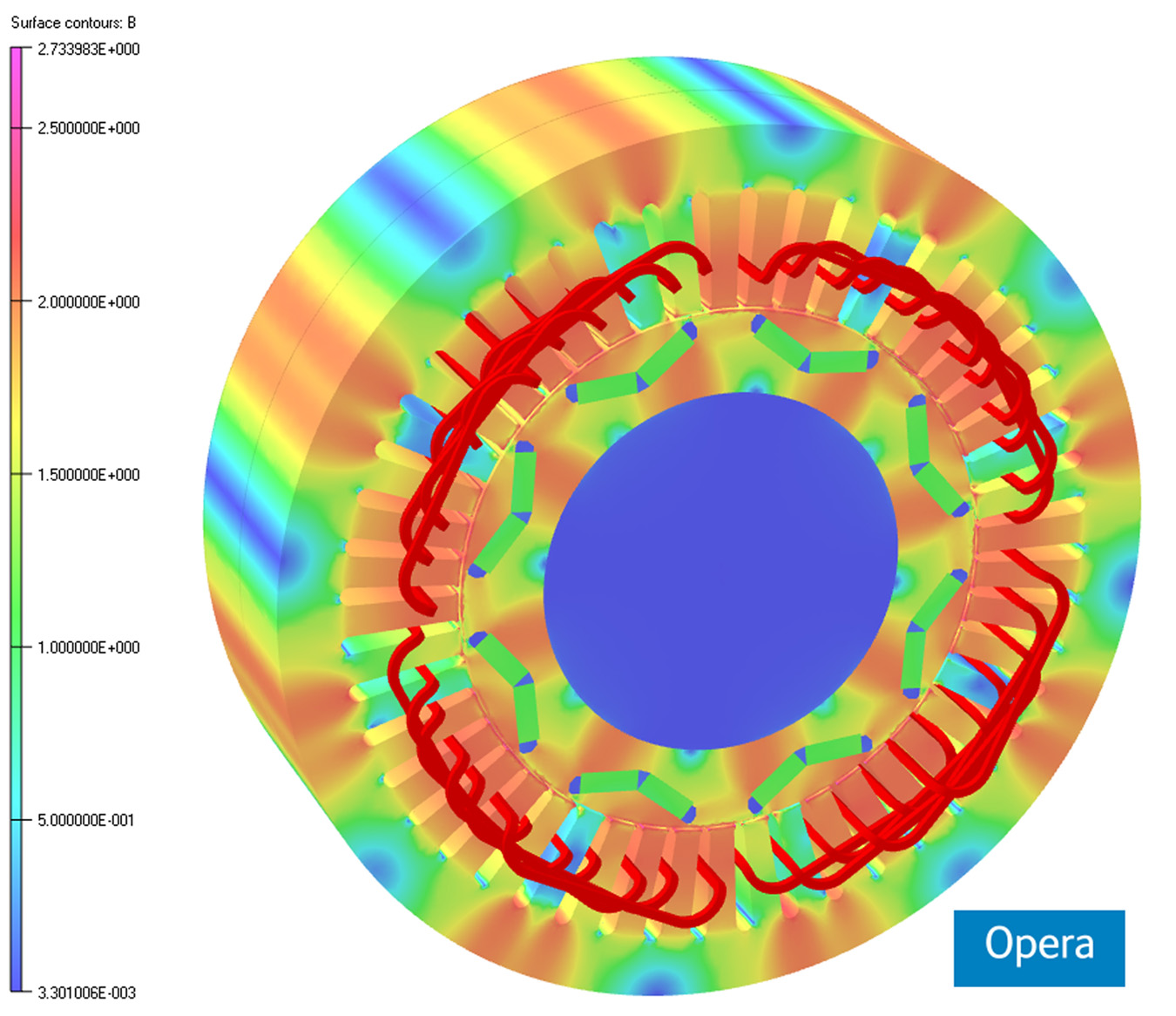Characterising Lifecycle Behaviour Of Permanent Magnets Is Critical
Permanent magnet materials are now being used in many designs of new electrical machine applications, and a lot of this equipment will be expected to have long lifecycles

If performance and lifecycle targets are to be met, then detailed characterisation at the design stage using advanced electromagnetic and multiphysics simulation technology will be critical, according to Cobham Technical Services.
High field strength, rare earth permanent magnets are key components in many of the new electrical machine designs now appearing on the market. Typical long-life applications for such technology include wave and wind power generators, and the traction motors for hybrid and electric vehicles.
Simulation software already plays a vital role in the development of such machines by shortening design-to-manufacture times and reducing the number of test prototypes that need to be produced. However, many of the modelling approaches and design software tools currently used are unsuitable for capturing and characterising gradual degradation of magnetic performance over time – especially if this is due to a combination of factors.
A unique material model, incorporated in all transient solvers of Cobham's Opera software suite, provides the means of accurately predicting changes to magnetic performance during a specific machine's lifecycle – helping designers to build in safeguards and margins to ensure performance.
The magnetization and demagnetization solvers in Opera have been developed and improved over more than a decade. The two dimensional version of the software was originally designed for a specialist US manufacturer of rare earth magnets, and was intended to help maximise the field strength and directionality of permanent magnets by simulating and optimizing the entire material magnetization process. The solver was later enhanced to handle the demagnetizing effect of a strong opposing magnetic field, which – in the case of a generator, for example – could be introduced by an in-service fault condition such as a short-circuit on its output.
The latest versions of these modules allow the hysteresis loops of hard and soft magnetic materials to be modelled in considerable detail. In conjunction with Opera’s powerful multi-physics simulation capabilities – which will characterise a design concept's electromagnetic behaviour, including the influence of temperature and mechanical stress effects, for example – the demagnetization solver enables the effects of demagnetization caused by functional, operational and environmental conditions during an equipment's service life to be accurately evaluated.
Cobham has built up considerable expertise in helping designers to optimize the performance of electrical machines, and its Opera software is used by a broad base of companies worldwide to accelerate development and maximise performance of equipment, including permanent magnet (PM) generators and motors.
The software is also currently being used by a major new research project in the UK, which is investigating the technology that will be needed for the next generation of low carbon vehicles. A key part of this research will involve examining the factors that cause the performance of PM traction motors to deteriorate with age, with a view to developing better materials, motors or control techniques to overcome the problem. Although partial demagnetization of a motor's permanent magnets is believed to be responsible, at present it is not clear whether this is due to natural degradation, overheating caused by excessive power demands, temporary fault conditions that are rectified during the life of the vehicle, or inherent shortcomings in the design of the motor itself.
According to Chris Riley of Cobham, “The need to be able to accurately characterise the demagnetization of high field strength permanent magnets at any stage in their lifecycle, with a view to improving long term performance, has never been more acute. PM traction motors are a prime example; their environmental operating conditions and duty cycles are far more severe than those of most industrial or consumer applications, yet users expect them to last for the lifetime of the vehicle – up to 14 years – with little or no change in performance. And although wind power generators have a more consistent duty requirement, off-shore platforms will need to endure very hostile climatic conditions. They will also be required to have long design lives – of 20 to 25 years – which again raises concerns about magnet longevity.”
At present, most PM-based traction motors for hybrid and all-electric vehicles use neodymium-iron-boron magnets, but their magnetic field strength reduces with increasing temperature, and above about 220 degrees C the demagnetization effects can be irreversible. The amount of demagnetization depends on a number of factors, including the physical shape of the magnet and its magnetic circuit, as well as the grade of material and the shape of its magnetic characteristic.
Some designers are using neodymium-iron-boron magnets in which a small percentage of the neodymium is replaced with dysprosium to raise the coercivity and the temperature at which permanent demagnetization occurs. However, as Cobham's Dr Dan Ilea points out, “At present, nearly all dysprosium comes from China, and is mainly used for nuclear, laser and magnetic data storage applications. There is likely to be a severe shortfall of this element within a couple of years, especially if it is taken up by high volume industries like automobile manufacturing. It is therefore critical to maximise the life of neodymium-iron-boron magnets by designing electrical machines that are not susceptible to self-demagnetization.”
CONTACT
Amanda Machado
Cobham Technical Services - Vector Fields Software
vectorfields.info@cobham.com
www.OperaFEA.com
+44 (0) 1865 370151
Tuesday 17 December 2013 / file under Power | Machinery | Environmental | Engineering | Automotive


